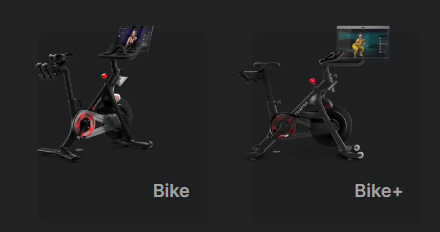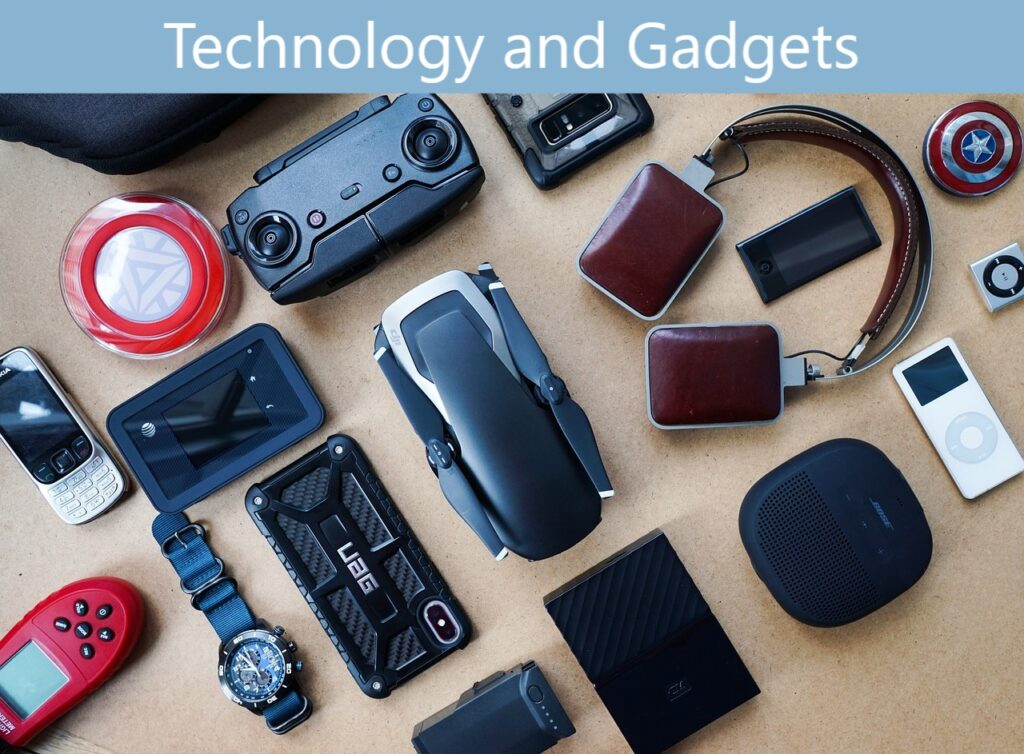Affiliate marketing presents a world of opportunities for those looking to generate substantial income by promoting products and services online. However, success in this field hinges on selecting the right niche—one that balances high demand, low competition, and lucrative commission rates. In this comprehensive guide, we explore ten of the best niches for affiliate marketing, each offering unique advantages and opportunities for growth. From health and wellness to sustainable living, these niches not only promise profitability but also allow you to align your marketing efforts with your passions and expertise. Whether you’re an aspiring affiliate marketer or looking to expand your current efforts, this blog, the “Best Niches For Affiliate Marketing” will provide valuable insights and examples to help you navigate and succeed in these thriving markets. Let’s dive in and discover the lucrative world of affiliate marketing through these top ten niches.

Health and Wellness
The health and wellness industry is a thriving market with immense potential for affiliate marketers. As people become more health-conscious, the demand for products and services that promote well-being continues to grow. In this blog, we’ll dive into why the health and wellness niche is one of the best for affiliate marketing, explore popular sub-niches, and provide some examples to help you get started.
Why Health and Wellness?
1. High Demand: Health and wellness are universal concerns. From fitness enthusiasts to individuals seeking mental health support, the target audience is vast and diverse.
2. Evergreen Market: Unlike trends that come and go, health and wellness are always relevant. People will continually seek ways to improve their physical and mental health.
3. Variety of Products: The industry offers a broad range of products and services, from fitness equipment to mental health resources. This variety allows affiliate marketers to choose sub-niches that align with their interests and expertise.
4. High Commissions: Many health and wellness products, such as supplements and fitness programs, offer attractive commission rates. Additionally, high-ticket items like fitness equipment can yield significant earnings per sale.
Popular Sub-Niches in Health and Wellness

1. Fitness Equipment and Programs: With the rise of home workouts and fitness apps, promoting fitness equipment and programs can be highly profitable. Popular products include:
- Example: Peloton bikes and subscriptions, which offer a high-ticket item and recurring revenue from memberships.
- Example: Bowflex adjustable dumbbells, a popular choice for home gym setups.
- Example: Beachbody fitness programs, known for their comprehensive workout plans and supportive community.
2. Supplements and Vitamins: Nutritional supplements and vitamins are always in demand. Whether it’s protein powders for athletes or vitamins for general health, there’s a wide range of products to promote:
- Example: Optimum Nutrition Gold Standard Whey Protein, a staple in the fitness community.
- Example: Garden of Life Multivitamins, popular for their organic and whole food-based ingredients.
- Example: Omega-3 fish oil supplements from brands like Nordic Naturals, known for their quality and effectiveness.
3. Mental Health Resources: Mental health awareness has increased significantly, leading to a demand for therapy services, meditation apps, and self-help resources. Promoting these can help you tap into a growing market:
- Example: BetterHelp online therapy services, providing accessible mental health support.
- Example: Headspace meditation app, offering guided meditations and mindfulness exercises.
- Example: Calm app, known for its sleep stories, meditation sessions, and calming music.
4. Natural and Organic Products: Consumers are becoming more conscious of what they put into their bodies. Promoting natural and organic products, such as skincare items, health foods, and eco-friendly supplements, can attract a dedicated audience:
- Example: Dr. Bronner’s Castile Soap, a versatile and eco-friendly cleaning product.
- Example: Sunwarrior Plant-Based Protein, a popular choice for those seeking vegan protein options.
- Example: Burt’s Bees skincare products, known for their natural ingredients and eco-friendly practices.
5. Weight Loss Programs: Weight loss remains a primary goal for many individuals. Promoting effective weight loss programs, meal plans, and related supplements can be highly lucrative:
- Example: WW (formerly Weight Watchers), a well-known weight loss program with a strong community.
- Example: Nutrisystem meal plans, offering convenient and structured weight loss solutions.
- Example: Noom, a weight loss app that combines psychology and technology to promote sustainable habits.
How to Succeed in the Health and Wellness Niche
1. Choose Your Sub-Niche: Focus on a specific area within the health and wellness industry that aligns with your interests and expertise. This will help you create more authentic and engaging content.
2. Provide Value: Offer valuable content that addresses your audience’s pain points and provides solutions. This can include product reviews, how-to guides, and personal stories.
3. Build Trust: Trust is crucial in the health and wellness niche. Be transparent about the products you promote and share honest reviews. Building a trustworthy brand will lead to higher conversion rates.
4. Utilize Multiple Platforms: Leverage various platforms to reach a wider audience. This can include a blog, YouTube channel, social media, and email marketing. Each platform can help you connect with different segments of your audience.
5. Stay Updated: The health and wellness industry is constantly evolving. Stay updated with the latest trends, research, and products to keep your content relevant and valuable.
The health and wellness niche offers abundant opportunities for affiliate marketers. With high demand, a variety of products, and the potential for substantial commissions, it’s an excellent choice for those looking to build a successful affiliate marketing business. By choosing a specific sub-niche, providing valuable content, and building trust with your audience, you can thrive in this evergreen market.

Personal Finance
Personal finance is a highly lucrative niche for affiliate marketers. As people continually seek ways to better manage their money, the demand for financial products and services remains strong. In this blog, we’ll explore why personal finance is an excellent choice for affiliate marketing, delve into popular sub-niches, and provide examples to help you get started.
Why Personal Finance?
1. High Demand: Money management is a universal concern. From saving and investing to managing debt and planning for retirement, there is a constant need for financial advice and products.
2. Evergreen Market: The need for financial literacy and tools to manage money effectively is timeless. Regardless of economic conditions, people will always seek ways to improve their financial health.
3. Variety of Products: The personal finance niche encompasses a broad range of products and services, from banking and investing to insurance and budgeting tools. This diversity allows you to find sub-niches that match your interests and expertise.
4. High Commissions: Many financial products, such as credit cards, loans, and investment platforms, offer high commission rates. Additionally, high-ticket items like financial planning services can yield significant earnings per referral.
Popular Sub-Niches in Personal Finance
1. Credit Cards and Banking: Credit cards and banking products are in high demand. Promoting these can be highly profitable, especially when targeting individuals looking for the best financial products.
- Example: Chase Sapphire Preferred Card, known for its travel rewards and bonus points.
- Example: Discover Bank’s high-yield savings accounts, offering competitive interest rates.
- Example: American Express Platinum Card, offering premium benefits and services.
2. Investment Platforms: As more people look to invest their money, promoting investment platforms can be a lucrative opportunity. These platforms cater to various levels of investors, from beginners to experienced traders.
- Example: Robinhood, a popular app for commission-free trading of stocks and cryptocurrencies.
- Example: Betterment, a robo-advisor that offers automated investment services.
- Example: Vanguard, known for its low-cost index funds and ETFs.
3. Personal Loans and Insurance: Promoting personal loans and insurance products can be highly rewarding, as these are essential financial services that many people need at different life stages.
- Example: SoFi personal loans, offering competitive rates and flexible terms.
- Example: Lemonade, an insurance company known for its user-friendly app and affordable policies.
- Example: Policygenius, an online platform for comparing and purchasing insurance policies.
4. Budgeting Tools and Software: With the growing emphasis on financial literacy, budgeting tools and software are becoming increasingly popular. These products help individuals manage their finances more effectively.
- Example: Mint, a free budgeting app that helps users track their spending and savings.
- Example: YNAB (You Need a Budget), a paid app that offers comprehensive budgeting features.
- Example: Personal Capital, a financial planning tool that includes budgeting, investment tracking, and retirement planning.
5. Financial Education and Courses: As people seek to improve their financial literacy, promoting financial education resources can be very beneficial. This can include online courses, ebooks, and webinars.
- Example: Coursera’s personal finance courses, covering topics from budgeting to investing.
- Example: Dave Ramsey’s Financial Peace University, a program focused on debt reduction and wealth building.
- Example: Udemy’s wide range of personal finance courses, taught by industry experts.
How to Succeed in the Personal Finance Niche
1. Choose Your Sub-Niche: Focus on a specific area within the personal finance industry that aligns with your interests and expertise. This will help you create more authentic and engaging content.
2. Provide Value: Offer valuable content that addresses your audience’s pain points and provides solutions. This can include product reviews, how-to guides, and personal stories.
3. Build Trust: Trust is crucial in the personal finance niche. Be transparent about the products you promote and share honest reviews. Building a trustworthy brand will lead to higher conversion rates.
4. Utilize Multiple Platforms: Leverage various platforms to reach a wider audience. This can include a blog, YouTube channel, social media, and email marketing. Each platform can help you connect with different segments of your audience.
5. Stay Updated: The personal finance industry is constantly evolving. Stay updated with the latest trends, research, and products to keep your content relevant and valuable.
The personal finance niche offers abundant opportunities for affiliate marketers. With high demand, a variety of products, and the potential for substantial commissions, it’s an excellent choice for those looking to build a successful affiliate marketing business. By choosing a specific sub-niche, providing valuable content, and building trust with your audience, you can thrive in this evergreen market.

Technology and Gadgets
The technology and gadgets niche is a dynamic and ever-evolving market that offers immense potential for affiliate marketers. With constant innovation and a tech-savvy audience eager to adopt the latest advancements, this niche presents numerous opportunities for generating substantial affiliate income. In this blog, we’ll explore why technology and gadgets is an excellent choice for affiliate marketing, delve into popular sub-niches, and provide examples to help you get started.
Why Technology and Gadgets?
1. High Demand: Technology is deeply integrated into modern life. From smartphones to smart home devices, there’s a constant demand for new and improved tech products.
2. Rapid Innovation: The tech industry is characterized by rapid advancements and frequent product releases, providing a steady stream of new products to promote.
3. Variety of Products: The technology niche encompasses a wide range of products, from personal gadgets to enterprise solutions. This diversity allows affiliate marketers to target specific audiences with tailored offerings.
4. High Commissions: Tech products, especially high-ticket items like laptops and home automation systems, often come with attractive commission rates. Additionally, subscription-based services offer recurring revenue opportunities.
Popular Sub-Niches in Technology and Gadgets
1. Smartphones and Accessories: The smartphone market is huge, with a continuous demand for the latest models and their accessories.
- Example: Apple iPhone, a perennial favorite with frequent new releases.
- Example: Samsung Galaxy series, known for its cutting-edge features.
- Example: Accessories like phone cases, screen protectors, and wireless chargers from brands like OtterBox and Anker.
2. Smart Home Devices: Smart home technology is growing rapidly, with consumers looking to automate and enhance their living spaces.
- Example: Amazon Echo, a leading smart speaker with voice control capabilities.
- Example: Nest Thermostat, a popular choice for smart home climate control.
- Example: Philips Hue smart lighting, allowing customizable lighting setups.
3. Laptops and Computers: The need for powerful computing devices spans both personal and professional use, making this a lucrative sub-niche.
- Example: MacBook Pro, favored by creative professionals for its performance and design.
- Example: Dell XPS series, known for its high-end specs and sleek design.
- Example: Gaming laptops like the ASUS ROG series, catering to the growing gaming community.
4. Software and Apps: From productivity tools to creative software, the demand for digital solutions is ever-present.
- Example: Microsoft Office 365, essential for productivity and collaboration.
- Example: Adobe Creative Cloud, a suite of tools for creative professionals.
- Example: Security software like Norton and McAfee, important for personal and business use.
5. Wearable Technology: Wearables are gaining popularity for their ability to track fitness and improve health.
- Example: Apple Watch, offering comprehensive health tracking and connectivity.
- Example: Fitbit, known for its range of fitness trackers.
- Example: Garmin smartwatches, catering to athletes and outdoor enthusiasts.
6. Audio and Entertainment: High-quality audio and entertainment devices are always in demand.
- Example: Bose noise-canceling headphones, popular for their sound quality.
- Example: Sonos home audio systems, offering high-fidelity sound.
- Example: Streaming devices like Roku and Amazon Fire Stick, enhancing home entertainment.
How to Succeed in the Technology and Gadgets Niche
1. Choose Your Sub-Niche: Focus on a specific area within the technology and gadgets industry that aligns with your interests and expertise. This will help you create more authentic and engaging content.
2. Provide Value: Offer valuable content that addresses your audience’s pain points and provides solutions. This can include product reviews, how-to guides, and unboxing videos.
3. Build Trust: Trust is crucial in the tech niche. Be transparent about the products you promote and share honest reviews. Building a trustworthy brand will lead to higher conversion rates.
4. Utilize Multiple Platforms: Leverage various platforms to reach a wider audience. This can include a blog, YouTube channel, social media, and email marketing. Each platform can help you connect with different segments of your audience.
5. Stay Updated: The technology industry is constantly evolving. Stay updated with the latest trends, research, and products to keep your content relevant and valuable.
The technology and gadgets niche offers abundant opportunities for affiliate marketers. With high demand, a variety of products, and the potential for substantial commissions, it’s an excellent choice for those looking to build a successful affiliate marketing business. By choosing a specific sub-niche, providing valuable content, and building trust with your audience, you can thrive in this dynamic market.

Beauty and Fashion
The beauty and fashion industry is a vibrant and lucrative niche for affiliate marketers. With a diverse range of products and a dedicated consumer base, it offers numerous opportunities for generating substantial affiliate income. In this blog, we’ll explore why beauty and fashion is an excellent choice for affiliate marketing, delve into popular sub-niches, and provide examples to help you get started.
Why Beauty and Fashion?
1. High Demand: Beauty and fashion are integral to many people’s lives. There’s a constant demand for new and innovative products, from skincare to clothing.
2. Social Media Influence: The rise of social media influencers has amplified the reach of beauty and fashion products. Influencers can drive significant traffic and sales through their recommendations.
3. Variety of Products: The beauty and fashion niche encompasses a broad range of products, allowing affiliate marketers to find sub-niches that match their interests and expertise.
4. High Commissions: Many beauty and fashion products come with attractive commission rates, especially high-end and luxury items.
Popular Sub-Niches in Beauty and Fashion
1. Skincare and Cosmetics: Skincare and cosmetics are evergreen markets with a dedicated following. Promoting these products can be highly profitable.
- Example: Glossier, known for its minimalistic and effective skincare products.
- Example: Fenty Beauty, Rihanna’s inclusive makeup line with a wide range of shades.
- Example: The Ordinary, popular for its affordable and science-based skincare solutions.
2. Haircare Products and Tools: Haircare is another vital sub-niche with a loyal customer base. From shampoos to styling tools, there’s a variety of products to promote.
- Example: Dyson Airwrap, a premium hair styling tool that has garnered rave reviews.
- Example: Olaplex hair treatments, known for their bond-building technology.
- Example: SheaMoisture, offering natural haircare products for various hair types.
3. Fashion and Accessories: Fashion is a broad sub-niche that includes clothing, shoes, and accessories. It’s a highly visual and dynamic market.
- Example: Zara, a popular brand known for its trendy and affordable fashion.
- Example: Gucci, a high-end brand offering luxury clothing and accessories.
- Example: ASOS, an online retailer with a wide range of fashion items for all styles.
4. Sustainable and Ethical Brands: As consumers become more conscious of their environmental impact, promoting sustainable and ethical brands can attract a dedicated audience.
- Example: Reformation, a brand known for its sustainable fashion practices.
- Example: Everlane, offering transparent pricing and ethically made clothing.
- Example: Dr. Hauschka, a skincare brand committed to organic and natural ingredients.
5. Fragrances: Perfumes and fragrances are a timeless category with a loyal customer base. They also often come with high commissions.
- Example: Jo Malone, known for its luxurious and unique scents.
- Example: Chanel No. 5, a classic fragrance with a long-standing reputation.
- Example: Le Labo, offering high-end, handcrafted fragrances.
How to Succeed in the Beauty and Fashion Niche
1. Choose Your Sub-Niche: Focus on a specific area within the beauty and fashion industry that aligns with your interests and expertise. This will help you create more authentic and engaging content.
2. Provide Value: Offer valuable content that addresses your audience’s needs and preferences. This can include product reviews, tutorials, and trend reports.
3. Build Trust: Trust is crucial in the beauty and fashion niche. Be transparent about the products you promote and share honest reviews. Building a trustworthy brand will lead to higher conversion rates.
4. Utilize Multiple Platforms: Leverage various platforms to reach a wider audience. This can include a blog, YouTube channel, Instagram, and TikTok. Each platform can help you connect with different segments of your audience.
5. Stay Updated: The beauty and fashion industry is constantly evolving. Stay updated with the latest trends, product launches, and influencer collaborations to keep your content relevant and valuable.
The beauty and fashion niche offers abundant opportunities for affiliate marketers. With high demand, a variety of products, and the potential for substantial commissions, it’s an excellent choice for those looking to build a successful affiliate marketing business. By choosing a specific sub-niche, providing valuable content, and building trust with your audience, you can thrive in this glamorous market.

Home and Garden
The home and garden niche is a thriving market that offers ample opportunities for affiliate marketers. As people invest more in improving their living spaces and cultivating beautiful gardens, the demand for home and garden products continues to rise. In this blog, we’ll explore why the home and garden niche is an excellent choice for affiliate marketing, delve into popular sub-niches, and provide examples to help you get started.
Why Home and Garden?
1. High Demand: Home improvement and gardening are popular hobbies and essential activities for many homeowners. There’s a constant demand for products that enhance living spaces and gardens.
2. Evergreen Market: The need for home and garden products is consistent, making it an evergreen market. Whether it’s seasonal gardening supplies or year-round home improvement tools, there’s always something to promote.
3. Variety of Products: The home and garden niche encompasses a wide range of products, from furniture and decor to tools and plants. This variety allows affiliate marketers to target specific audiences with tailored offerings.
4. High Commissions: Many home and garden products, especially high-ticket items like furniture and appliances, offer attractive commission rates.
Popular Sub-Niches in Home and Garden
1. Home Improvement and DIY: Home improvement and DIY projects are popular among homeowners looking to enhance their living spaces. Promoting tools, materials, and guides can be highly profitable.
- Example: Home Depot, offering a wide range of tools and materials for DIY projects.
- Example: Lowe’s, known for its extensive selection of home improvement products.
- Example: Ryobi tools, a popular brand for DIY enthusiasts.
2. Gardening Tools and Supplies: Gardening is a beloved hobby for many, and there is a steady demand for quality tools and supplies.
- Example: Miracle-Gro, a well-known brand for gardening soil and fertilizers.
- Example: Fiskars gardening tools, offering durable and ergonomic options.
- Example: Burpee seeds, providing a wide variety of seeds for all types of gardens.
3. Furniture and Home Decor: Furniture and home decor are essential for creating comfortable and stylish living spaces. Promoting these products can attract a broad audience.
- Example: Wayfair, offering a vast selection of furniture and decor items.
- Example: IKEA, known for its affordable and stylish furniture.
- Example: West Elm, offering high-quality, modern home furnishings.
4. Smart Home Gadgets: Smart home technology is growing rapidly, with consumers looking to automate and enhance their living spaces.
- Example: Amazon Echo, a leading smart speaker with voice control capabilities.
- Example: Nest Thermostat, a popular choice for smart home climate control.
- Example: Philips Hue smart lighting, allowing customizable lighting setups.
5. Outdoor and Patio: Outdoor living spaces are an extension of the home, and there is a growing market for outdoor furniture, grills, and decor.
- Example: Weber grills, known for their high-quality and durable outdoor cooking products.
- Example: Trex decking, offering eco-friendly and low-maintenance decking solutions.
- Example: Sunbrella outdoor fabrics, known for their durability and vibrant colors.
How to Succeed in the Home and Garden Niche
1. Choose Your Sub-Niche: Focus on a specific area within the home and garden industry that aligns with your interests and expertise. This will help you create more authentic and engaging content.
2. Provide Value: Offer valuable content that addresses your audience’s needs and preferences. This can include product reviews, how-to guides, and DIY project ideas.
3. Build Trust: Trust is crucial in the home and garden niche. Be transparent about the products you promote and share honest reviews. Building a trustworthy brand will lead to higher conversion rates.
4. Utilize Multiple Platforms: Leverage various platforms to reach a wider audience. This can include a blog, YouTube channel, Pinterest, and Instagram. Each platform can help you connect with different segments of your audience.
5. Stay Updated: The home and garden industry is constantly evolving. Stay updated with the latest trends, product launches, and seasonal needs to keep your content relevant and valuable.
The home and garden niche offers abundant opportunities for affiliate marketers. With high demand, a variety of products, and the potential for substantial commissions, it’s an excellent choice for those looking to build a successful affiliate marketing business. By choosing a specific sub-niche, providing valuable content, and building trust with your audience, you can thrive in this evergreen market.

Lifestyle and Hobbies
The lifestyle and hobbies niche is a dynamic and engaging market that offers significant opportunities for affiliate marketers. As people invest time and money into their interests and passions, the demand for related products and services grows. In this blog, we’ll explore why lifestyle and hobbies is an excellent choice for affiliate marketing, delve into popular sub-niches, and provide examples to help you get started.
Why Lifestyle and Hobbies?
1. High Engagement: People are deeply passionate about their hobbies and lifestyles, leading to high engagement and loyalty. This translates into a willingness to spend on products that enhance their experiences.
2. Diverse Audience: The lifestyle and hobbies niche covers a broad range of interests, allowing marketers to target various demographics and tailor their content to specific audiences.
3. Evergreen Appeal: Many hobbies and lifestyle interests have enduring appeal, ensuring a consistent demand for related products and services.
4. High Commissions: Certain lifestyle products, especially those related to travel, photography, and outdoor activities, often come with attractive commission rates.
Popular Sub-Niches in Lifestyle and Hobbies
1. Travel and Tourism: Travel remains a popular interest, with people constantly seeking new experiences and destinations. Promoting travel-related products can be highly rewarding.
- Example: Booking.com, offering hotel and vacation rental bookings worldwide.
- Example: Airbnb, providing unique lodging options and experiences.
- Example: Samsonite luggage, known for its durable and stylish travel gear.
2. Photography Equipment and Courses: Photography is a popular hobby and profession, with a constant demand for quality equipment and educational resources.
- Example: Canon cameras, offering a range of options from beginner to professional.
- Example: Adobe Photoshop and Lightroom, essential software for photographers.
- Example: Udemy photography courses, providing tutorials and advanced techniques.
3. Outdoor and Adventure Gear: Outdoor activities such as hiking, camping, and fishing attract a dedicated audience willing to invest in quality gear.
- Example: Patagonia outdoor clothing, known for its durability and sustainability.
- Example: REI, offering a wide range of outdoor gear and equipment.
- Example: YETI coolers and drinkware, popular for their high performance and rugged design.
4. Fitness and Wellness: Fitness and wellness are key components of many people’s lifestyles. Promoting related products can attract a health-conscious audience.
- Example: Peloton bikes and subscriptions, offering interactive fitness experiences.
- Example: Lululemon activewear, known for its high-quality and stylish workout gear.
- Example: MyFitnessPal, a popular app for tracking diet and exercise.
5. Crafts and DIY: Crafting and DIY projects are popular hobbies that offer numerous product opportunities, from supplies to instructional guides.
- Example: Cricut machines, popular for creating custom crafts.
- Example: Etsy, a marketplace for handmade and craft supplies.
- Example: Skillshare DIY courses, offering tutorials on various crafting techniques.
How to Succeed in the Lifestyle and Hobbies Niche
1. Choose Your Sub-Niche: Focus on a specific area within the lifestyle and hobbies industry that aligns with your interests and expertise. This will help you create more authentic and engaging content.
2. Provide Value: Offer valuable content that addresses your audience’s needs and preferences. This can include product reviews, how-to guides, and inspirational stories.
3. Build Trust: Trust is crucial in the lifestyle and hobbies niche. Be transparent about the products you promote and share honest reviews. Building a trustworthy brand will lead to higher conversion rates.
4. Utilize Multiple Platforms: Leverage various platforms to reach a wider audience. This can include a blog, YouTube channel, Instagram, and Pinterest. Each platform can help you connect with different segments of your audience.
5. Stay Updated: The lifestyle and hobbies industry is constantly evolving. Stay updated with the latest trends, product launches, and seasonal needs to keep your content relevant and valuable.
The lifestyle and hobbies niche offers abundant opportunities for affiliate marketers. With high engagement, a diverse audience, and the potential for substantial commissions, it’s an excellent choice for those looking to build a successful affiliate marketing business. By choosing a specific sub-niche, providing valuable content, and building trust with your audience, you can thrive in this dynamic market.

Education and E-Learning
The education and e-learning niche is a rapidly growing market that presents significant opportunities for affiliate marketers. As more people seek to enhance their skills and knowledge through online learning, the demand for educational products and services continues to increase. In this blog, we’ll explore why education and e-learning is an excellent choice for affiliate marketing, delve into popular sub-niches, and provide examples to help you get started.
Why Education and E-Learning?
1. High Demand: Education is a lifelong pursuit, and there’s a consistent demand for learning resources across all age groups and professions.
2. Growing Market: The rise of online learning platforms has expanded access to education, making it more convenient and accessible for a global audience.
3. Variety of Products: The education and e-learning niche includes a wide range of products and services, from online courses and certifications to educational software and tools.
4. High Commissions: Many educational products, particularly online courses and certifications, offer attractive commission rates, often with recurring revenue opportunities from subscription-based models.
Popular Sub-Niches in Education and E-Learning
1. Online Courses and Certifications: Online courses and certifications are in high demand as individuals seek to acquire new skills and advance their careers.
- Example: Coursera, offering a wide range of courses from top universities and institutions.
- Example: Udemy, a popular platform with courses on virtually every subject.
- Example: LinkedIn Learning, providing professional development courses and certifications.
2. Language Learning Tools: Language learning is a popular sub-niche, with many people looking to learn new languages for personal or professional reasons.
- Example: Duolingo, a free language-learning app with gamified lessons.
- Example: Rosetta Stone, known for its immersive language-learning programs.
- Example: Babbel, offering subscription-based language courses.
3. Educational Software and Apps: Educational software and apps cater to both students and educators, providing tools to enhance the learning experience.
- Example: Khan Academy, offering free educational resources and practice exercises.
- Example: Grammarly, an AI-powered writing assistant to improve writing skills.
- Example: Quizlet, a popular study tool with flashcards and learning games.
4. E-Books and Study Guides: E-books and study guides are essential resources for students and lifelong learners seeking in-depth knowledge on specific subjects.
- Example: Amazon Kindle, providing a platform for purchasing and reading e-books.
- Example: SparkNotes, offering study guides and summaries of classic literature.
- Example: O’Reilly Media, known for its technical and business e-books.
5. Career Development Resources: Career development resources help individuals enhance their skills, prepare for job interviews, and advance in their careers.
- Example: Skillshare, offering creative and business courses to help learners develop new skills.
- Example: MasterClass, featuring courses taught by industry leaders and celebrities.
- Example: The Muse, providing career advice, job search resources, and professional development courses.
How to Succeed in the Education and E-Learning Niche
1. Choose Your Sub-Niche: Focus on a specific area within the education and e-learning industry that aligns with your interests and expertise. This will help you create more authentic and engaging content.
2. Provide Value: Offer valuable content that addresses your audience’s educational needs and goals. This can include course reviews, how-to guides, and educational resources.
3. Build Trust: Trust is crucial in the education niche. Be transparent about the products you promote and share honest reviews. Building a trustworthy brand will lead to higher conversion rates.
4. Utilize Multiple Platforms: Leverage various platforms to reach a wider audience. This can include a blog, YouTube channel, LinkedIn, and social media. Each platform can help you connect with different segments of your audience.
5. Stay Updated: The education and e-learning industry is constantly evolving. Stay updated with the latest trends, new courses, and technological advancements to keep your content relevant and valuable.
The education and e-learning niche offers abundant opportunities for affiliate marketers. With high demand, a variety of products, and the potential for substantial commissions, it’s an excellent choice for those looking to build a successful affiliate marketing business. By choosing a specific sub-niche, providing valuable content, and building trust with your audience, you can thrive in this growing market.

Pet Care
The pet care industry is a booming market with a dedicated consumer base, making it an excellent niche for affiliate marketers. As pet ownership continues to rise, so does the demand for high-quality pet products and services. In this blog, we’ll explore why pet care is a lucrative choice for affiliate marketing, delve into popular sub-niches, and provide examples to help you get started.
Why Pet Care?
1. High Demand: Pet owners are passionate about their furry friends and are willing to invest in products and services that enhance their pets’ lives.
2. Evergreen Market: The need for pet care products is consistent, as pets require ongoing care throughout their lives.
3. Variety of Products: The pet care niche encompasses a wide range of products and services, from pet food and grooming supplies to training resources and health products.
4. High Commissions: Many pet care products, particularly specialty and high-end items, offer attractive commission rates.
Popular Sub-Niches in Pet Care
1. Pet Food and Treats: Pet food and treats are essential items that pet owners purchase regularly, making them a reliable source of recurring income.
- Example: Blue Buffalo, known for its high-quality, natural pet food.
- Example: Greenies dental treats, popular for promoting pet dental health.
- Example: Chewy.com, offering a wide selection of pet food brands with convenient delivery options.
2. Pet Grooming and Care Products: Grooming and care products help keep pets healthy and looking their best. This sub-niche includes grooming tools, shampoos, and skincare products.
- Example: Furminator de-shedding tools, designed to reduce pet shedding.
- Example: Earthbath pet shampoos, known for their natural and gentle formulas.
- Example: PetSafe grooming products, offering a range of tools for different grooming needs.
3. Pet Training Resources: Training resources are invaluable for pet owners looking to teach their pets new behaviors or address behavioral issues.
- Example: Doggy Dan’s Online Dog Trainer, offering comprehensive dog training videos and resources.
- Example: Clicker training kits from Karen Pryor, a leading figure in positive reinforcement training.
- Example: BarkBox training aids, including treats and toys designed to assist with training.
4. Pet Health and Insurance: Pet health products and insurance plans help pet owners manage their pets’ well-being and cover unexpected veterinary costs.
- Example: PetPlan pet insurance, providing coverage for a wide range of health issues.
- Example: Nutramax supplements, known for their joint health products like Cosequin.
- Example: Banfield Pet Hospital wellness plans, offering preventive care packages.
5. Pet Accessories and Toys: Pet accessories and toys are popular among pet owners who want to keep their pets entertained and comfortable.
- Example: Kong toys, durable and engaging for both dogs and cats.
- Example: PetSafe interactive toys, designed to stimulate pets’ minds.
- Example: Ruffwear dog gear, including harnesses, leashes, and outdoor accessories.
6. Pet Travel and Safety: Pet travel products ensure pets’ safety and comfort during trips, making this a growing sub-niche as more people travel with their pets.
- Example: Sleepypod pet carriers, offering safety and comfort for traveling pets.
- Example: Kurgo travel accessories, including seat covers, travel bowls, and harnesses.
- Example: Solvit pet ramps and steps, aiding pets in and out of vehicles.
How to Succeed in the Pet Care Niche
1. Choose Your Sub-Niche: Focus on a specific area within the pet care industry that aligns with your interests and expertise. This will help you create more authentic and engaging content.
2. Provide Value: Offer valuable content that addresses your audience’s needs and preferences. This can include product reviews, how-to guides, and pet care tips.
3. Build Trust: Trust is crucial in the pet care niche. Be transparent about the products you promote and share honest reviews. Building a trustworthy brand will lead to higher conversion rates.
4. Utilize Multiple Platforms: Leverage various platforms to reach a wider audience. This can include a blog, YouTube channel, Instagram, and Facebook. Each platform can help you connect with different segments of your audience.
5. Stay Updated: The pet care industry is constantly evolving. Stay updated with the latest trends, product launches, and pet care practices to keep your content relevant and valuable.
The pet care niche offers abundant opportunities for affiliate marketers. With high demand, a variety of products, and the potential for substantial commissions, it’s an excellent choice for those looking to build a successful affiliate marketing business. By choosing a specific sub-niche, providing valuable content, and building trust with your audience, you can thrive in this rewarding market.

Parenting and Baby Products
The parenting and baby products niche is a robust market with a dedicated and engaged audience, making it an excellent choice for affiliate marketers. As parents seek the best products for their children, the demand for high-quality, safe, and innovative baby and parenting products continues to grow. In this blog, we’ll explore why parenting and baby products is a lucrative niche for affiliate marketing, delve into popular sub-niches, and provide examples to help you get started.
Why Parenting and Baby Products?
1. High Demand: Parents are always looking for products that will make their lives easier and improve their children’s well-being, creating a consistent demand for these products.
2. Evergreen Market: The need for baby and parenting products is ongoing, as new parents continuously enter the market and existing parents seek new solutions as their children grow.
3. Trust and Loyalty: Parents often seek trusted brands and recommendations, creating a loyal customer base that values quality and safety.
4. High Commissions: Many baby and parenting products, especially high-ticket items like strollers and cribs, offer attractive commission rates.
Popular Sub-Niches in Parenting and Baby Products
1. Baby Care Products: Baby care products are essential for every parent, from diapers and wipes to lotions and shampoos.
- Example: Pampers diapers, known for their quality and reliability.
- Example: Huggies baby wipes, popular for their gentle and effective cleaning.
- Example: Johnson’s Baby Shampoo, a trusted brand for baby care.
2. Feeding and Nursing: Feeding and nursing products are crucial for newborns and infants, making this a vital sub-niche.
- Example: Medela breast pumps, known for their efficiency and comfort.
- Example: Dr. Brown’s baby bottles, designed to reduce colic and gas.
- Example: Philips Avent, offering a range of feeding and nursing products.
3. Strollers and Car Seats: Strollers and car seats are high-ticket items that parents invest in for safety and convenience.
- Example: UPPAbaby strollers, popular for their design and functionality.
- Example: Britax car seats, known for their safety features and ease of use.
- Example: Graco travel systems, offering integrated stroller and car seat solutions.
4. Nursery Furniture and Decor: Nursery furniture and decor help parents create a comfortable and stylish space for their babies.
- Example: Delta Children cribs, offering a range of stylish and safe options.
- Example: Babyletto nursery furniture, known for its modern designs.
- Example: Pottery Barn Kids, providing high-quality nursery decor and furnishings.
5. Toys and Educational Products: Toys and educational products are essential for a child’s development, making them a popular choice for parents.
- Example: Fisher-Price, offering a wide range of developmental toys.
- Example: Melissa & Doug, known for their educational and creative toys.
- Example: Lovevery play kits, designed to support early childhood development.
6. Maternity and Baby Clothing: Comfortable and stylish clothing for both babies and expecting mothers is always in demand.
- Example: Carter’s baby clothing, a trusted brand for affordable and quality baby clothes.
- Example: Hatch maternity wear, known for its fashionable and comfortable designs.
- Example: Burt’s Bees Baby, offering organic and sustainable baby clothing.
How to Succeed in the Parenting and Baby Products Niche
1. Choose Your Sub-Niche: Focus on a specific area within the parenting and baby products industry that aligns with your interests and expertise. This will help you create more authentic and engaging content.
2. Provide Value: Offer valuable content that addresses your audience’s needs and concerns. This can include product reviews, parenting tips, and how-to guides.
3. Build Trust: Trust is crucial in the parenting niche. Be transparent about the products you promote and share honest reviews. Building a trustworthy brand will lead to higher conversion rates.
4. Utilize Multiple Platforms: Leverage various platforms to reach a wider audience. This can include a blog, YouTube channel, Instagram, and Pinterest. Each platform can help you connect with different segments of your audience.
5. Stay Updated: The parenting and baby products industry is constantly evolving. Stay updated with the latest trends, product launches, and parenting tips to keep your content relevant and valuable.
The parenting and baby products niche offers abundant opportunities for affiliate marketers. With high demand, a variety of products, and the potential for substantial commissions, it’s an excellent choice for those looking to build a successful affiliate marketing business. By choosing a specific sub-niche, providing valuable content, and building trust with your audience, you can thrive in this rewarding market.

Sustainable and Green Living
The sustainable and green living niche is rapidly gaining traction as more people become environmentally conscious and seek eco-friendly alternatives. This market offers significant opportunities for affiliate marketers, driven by the increasing demand for sustainable products and practices. In this blog, we’ll explore why sustainable and green living is an excellent choice for affiliate marketing, delve into popular sub-niches, and provide examples to help you get started.
Why Sustainable and Green Living?
1. High Demand: Consumers are increasingly aware of their environmental impact and are seeking sustainable alternatives in various aspects of their lives.
2. Growing Market: The shift towards sustainability is not just a trend; it’s a growing movement that spans across multiple industries, ensuring a broad and expanding market.
3. Variety of Products: The sustainable living niche includes a wide range of products, from household goods to fashion, allowing affiliate marketers to target specific audiences with tailored offerings.
4. Ethical Appeal: Promoting sustainable products aligns with ethical marketing practices, appealing to consumers who value social responsibility.
Popular Sub-Niches in Sustainable and Green Living
1. Eco-Friendly Household Products: Eco-friendly household products are essential for consumers looking to reduce their environmental footprint in daily life.
- Example: Seventh Generation cleaning products, known for their plant-based and non-toxic formulations.
- Example: Ecover dishwashing liquid, offering biodegradable and eco-friendly cleaning solutions.
- Example: Grove Collaborative, a subscription service for sustainable household products.
2. Renewable Energy Solutions: Renewable energy products help consumers reduce their reliance on non-renewable resources and lower their carbon footprint.
- Example: Tesla solar panels, offering efficient and aesthetically pleasing solar energy solutions.
- Example: Goal Zero portable solar chargers, ideal for outdoor enthusiasts and sustainable living.
- Example: SunPower, known for high-efficiency solar panels for residential and commercial use.
3. Sustainable Fashion and Accessories: Sustainable fashion is gaining popularity as consumers seek stylish yet eco-friendly clothing and accessories.
- Example: Patagonia, a brand committed to sustainable practices and environmental activism.
- Example: Everlane, known for its transparent pricing and sustainable sourcing.
- Example: Reformation, offering stylish clothing made from eco-friendly materials.
4. Zero-Waste Lifestyle Products: Zero-waste products help consumers minimize their waste and adopt more sustainable habits.
- Example: Bee’s Wrap, reusable beeswax wraps for food storage.
- Example: Stasher bags, silicone reusable bags for food storage and more.
- Example: Package Free Shop, offering a wide range of zero-waste products.
5. Organic and Natural Personal Care: Organic and natural personal care products cater to consumers looking to avoid synthetic chemicals and support sustainable practices.
- Example: Dr. Bronner’s, offering organic and fair trade personal care products.
- Example: Lush, known for its handmade, cruelty-free, and eco-friendly beauty products.
- Example: Burt’s Bees, providing natural and sustainable skincare products.
6. Green Building and Home Improvement: Green building products and practices help homeowners create more energy-efficient and sustainable living spaces.
- Example: LEED certification services, promoting green building standards.
- Example: Eco-friendly insulation products like those from GreenFiber.
- Example: Bamboo flooring from Cali Bamboo, a sustainable alternative to traditional hardwood.
How to Succeed in the Sustainable and Green Living Niche
1. Choose Your Sub-Niche: Focus on a specific area within the sustainable and green living industry that aligns with your interests and expertise. This will help you create more authentic and engaging content.
2. Provide Value: Offer valuable content that addresses your audience’s needs and preferences. This can include product reviews, how-to guides, and tips for living a more sustainable lifestyle.
3. Build Trust: Trust is crucial in the sustainable living niche. Be transparent about the products you promote and share honest reviews. Building a trustworthy brand will lead to higher conversion rates.
4. Utilize Multiple Platforms: Leverage various platforms to reach a wider audience. This can include a blog, YouTube channel, Instagram, and Pinterest. Each platform can help you connect with different segments of your audience.
5. Stay Updated: The sustainable and green living industry is constantly evolving. Stay updated with the latest trends, product launches, and eco-friendly practices to keep your content relevant and valuable.
The sustainable and green living niche offers abundant opportunities for affiliate marketers. With high demand, a variety of products, and the potential for substantial commissions, it’s an excellent choice for those looking to build a successful affiliate marketing business. By choosing a specific sub-niche, providing valuable content, and building trust with your audience, you can thrive in this growing market.
Conclusion
Affiliate marketing presents a world of opportunities for those looking to generate substantial income by promoting products and services online. However, success in this field hinges on selecting the right niche—one that balances high demand, low competition, and lucrative commission rates. In this comprehensive guide, we explore ten of the best niches for affiliate marketing, each offering unique advantages and opportunities for growth. From health and wellness to sustainable living, these niches not only promise profitability but also allow you to align your marketing efforts with your passions and expertise. Whether you’re an aspiring affiliate marketer or looking to expand your current efforts, this blog will provide valuable insights and examples to help you navigate and succeed in these thriving markets. Let’s dive in and discover the lucrative world of affiliate marketing through these top ten niches.
For additional Affiliated product, click here


2 thoughts on “Best Niches For Affiliate Marketing”
Comments are closed.